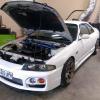Manual Conversion
Announcements
-
Similar Content
-
Latest Posts
-
Infiniti US are teasing a manual Q50 as a way to refresh a (very old) model. https://torquecafe.com/manual-performance-sedans-arent-dead-yet/ Can't be too technically difficult given the Z has the same motor with a manual gearbox......here's hoping there is a JDM version we can import here, that would save me a world of headaches
-
It's almost certainly a reluctor generating an "AC" waveform. No, ECUs don't generally read those - they're usually set up for PWM square wave 0-5v stuff.
-
Working through possible solutions of converting my mechanical speedo. Anyone know what type of speedo sensor the factory r34 gtr getrag has ? what the output is ? I assume its not a VSS and more a voltage like earlier speedo sensors ? Can an ECU read it ?
-
roof rail delete used to be a thing, they were made locally for a while too
-
By AnimalGarage · Posted
I can get more photos of it here soon and I plan to make a thread detailing the process. I received the car this way and it sorely needs refinishing. That is probably the most appealing photo of it. Up close it is fading, cracked, and needs to be re-glued. Depending on their condition I'm on the fence between refinishing or making a new set. Another angle hiding the pimples and razor pumps
-






Recommended Posts
Create an account or sign in to comment
You need to be a member in order to leave a comment
Create an account
Sign up for a new account in our community. It's easy!
Register a new accountSign in
Already have an account? Sign in here.
Sign In Now